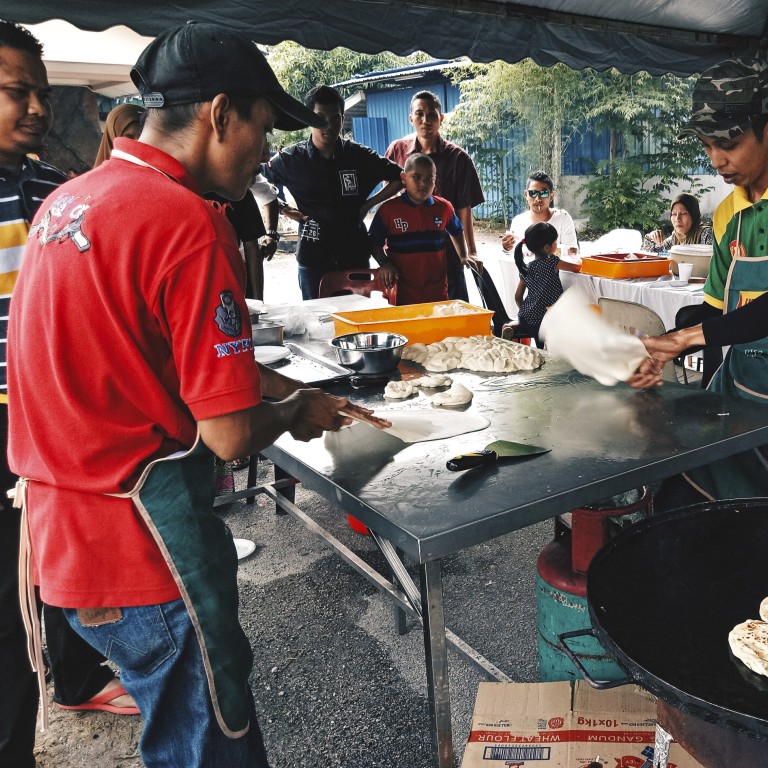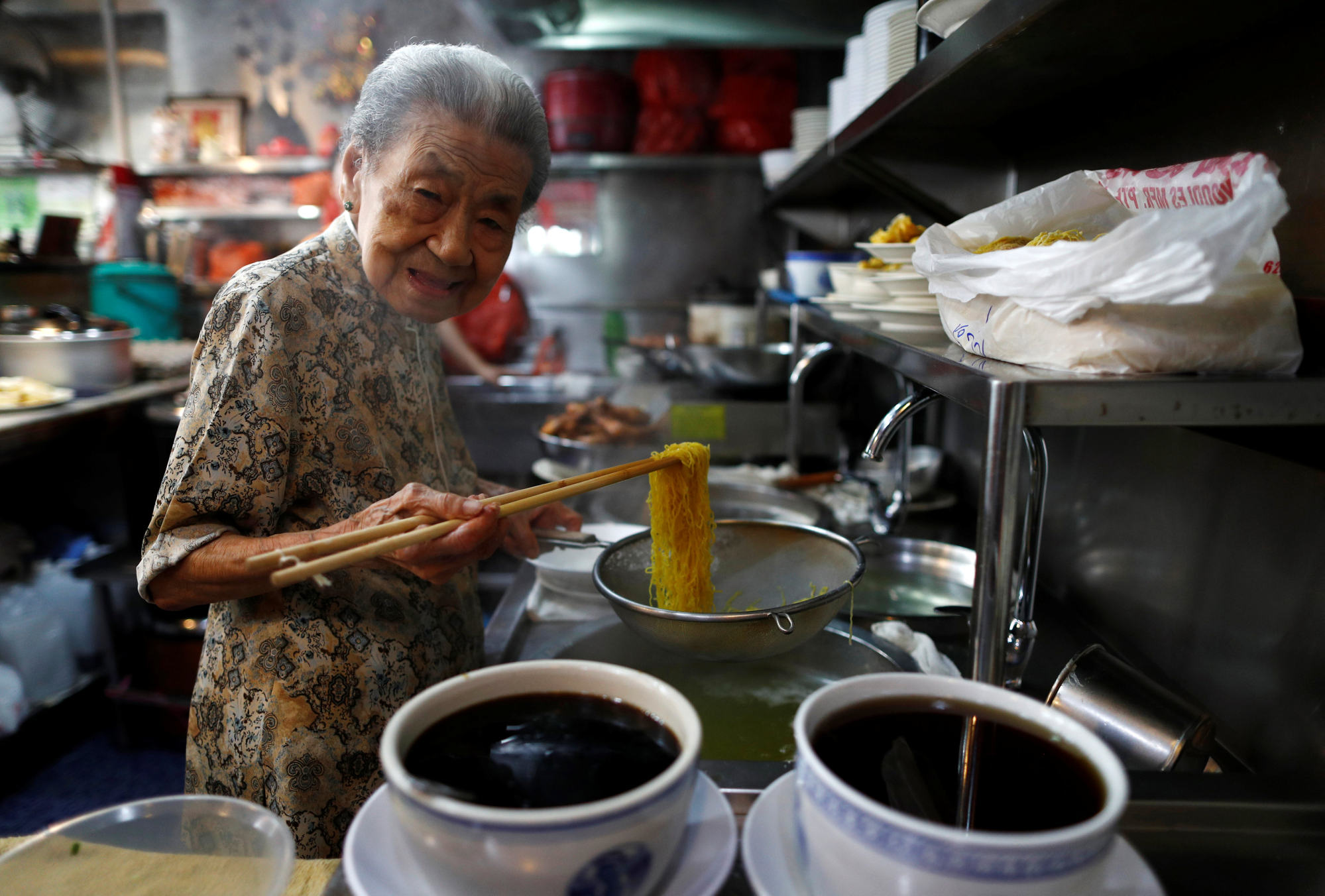From Singapore’s ban mian to Malaysia’s roti canai: soaring wheat prices hit Southeast Asia’s street-food favourites
A looming global shortage of wheat amid the war in Ukraine has sent the cost of the flour used in ‘ban mian’, ‘roti canai’ and other popular snacks shooting up Some vendors have tried to absorb the costs, while others have simply stayed closed. But with more pain ahead, there’s only one direction prices are heading
Dewey Sim and Hadi Azmi10:30am, 14 May, 2022

For the first time in six years, Leong Poh Yee had to raise the price of the ban mian she sells from a hawker stall in Singapore by 10 per cent in January, as the soaring cost of wheat, oil and electricity ate into her profits.
Leong makes the noodles for her ban mian – a popular Chinese dish typically topped with minced meat and anchovies – by hand with wheat flour every day. But that flour now costs nearly 15 per cent more than it did last year, forcing Leong to pass some of the increase onto her customers. Today, a bowl of her steaming hot ban mian will set you back S$5 (US$3.60).
Global food prices started to rise in mid-2020 when businesses shut down due to the Covid-19 pandemic, straining supply chains. Since then, there have been problems with key crops in many parts of the world.

Russia’s invasion of Ukraine in late February dramatically worsened the outlook. Food prices hit an all-time record in February and again in March, according to the UN food agency. Russia and Ukraine account for nearly one-third of global wheat and barley, and two-thirds of the world’s export of sunflower oil used for cooking.
Advertisement
Advertisement
The conflict has damaged Ukraine’s ports and agricultural infrastructure, likely limiting the country’s output for years. Kyiv has also banned the export of certain grains to preserve food supplies. Earlier this month, President Volodymyr Zelensky pleaded for international help to end a Russian blockade and “unblock Ukrainian ports for wheat exports”, further warning that “without our agricultural exports, dozens of countries in different parts of the world are already on the brink of food shortages”.
‘We don’t have a choice’
Leong, 47, is no stranger to price increases. She just hopes for a roaring trade at her noodle stall in central Singapore so she can absorb any additional costs without having to raise her prices again.“Our customers are unhappy but there’s not really much we can do,” she said in Mandarin. “We have to earn a living. We don’t have a choice.”
The World Bank forecasts wheat prices could rise more than 40 per cent in 2022. Countries worst affected will be those already facing a food crisis, such as Afghanistan and Yemen, and major importers of Ukrainian or Russian wheat, such as Egypt. But Asia is far from immune.
Wheat is one of the main ingredients in a number of traditional foods – from naan, to noodles, to the wrappers for Chinese dumplings. Asia’s growing middle-class, meanwhile, has developed an expanding appetite for other wheat-based treats such as pizza, pasta and biscuits.
Roti canai is prepared at a streetside stall in Malaysia. Some vendors in the country have been left reeling by soaring grain prices. Photo: Shutterstock
In the cultural melting pot of Malaysia, which much like Singapore has a population drawn from multiple ethnic groups, rice is a major staple. But roti canai, a popular go-to breakfast snack that’s known as roti prata in the city state, is made from wheat flour.
The Indian flatbread, served griddled and often eaten with curry and sambal, is ubiquitous in hawker centres across both countries. In Malaysia, there are signs that some vendors are reeling from soaring grain prices.
Fathi Ahmad, who sells roti canai at a small restaurant in Gombak, to the north of Kuala Lumpur, said he had kept his stall closed this month because of the high price of flour.
“People think I’m still on my Eid break, but the truth is I cannot open because flour is expensive,” said Fathi, referring to the festival marking the end of the Islamic fasting month of Ramadan.
Because roti canai is predominantly a breakfast food and many of his clientele are observant Muslims, Fathi said he “wasn’t paying much attention to the price the entire month, and was shocked when my supplier informed me a few days ago.”
FFM Berhad, the largest flour miller in Malaysia, was recently forced to source grains from more expensive suppliers in the United States and Australia in the absence of “cheap and abundant” Russian and Ukrainian supplies, the Malaysian Reserve news site reported.
At the bakery in Silent Teddies, a social enterprise that helps Malaysia’s deaf community, manager Cindy Leong said the business has had to absorb the rising cost of flour and other raw materials because it is still fulfilling pre-orders it received before the latest increases for products priced at 15-50 ringgit (US$3.40-US$11.40) each.
People eat at street food stalls and restaurants in Kuala Lumpur. The pandemic made many wary of eating out. Photo: Loop Images/Universal Images Group via Getty Images
Restaurateur Shankar R. Santhiram, meanwhile, laments the rising costs as his Fire Frill steakhouse in Kuala Lumpur’s upmarket Taman Tun Dr Ismail neighbourhood had only just started to recover from lengthy Covid lockdowns and the public’s pandemic-induced aversion to going out.
“Most small businesses have been knocked down pretty badly, and the price increases are another blow. We are in a constant uphill battle,” he said. “Customers are never OK with prices going up so we do our best to explain, and perhaps even appeal to their sense of supporting local businesses.”
More pain ahead
Southeast Asia’s net importers of wheat, including Singapore, Thailand and Vietnam, will be more exposed to the rising prices, said Paul Kent, a partner at KPMG Singapore.“Food-importing nations in Asia and elsewhere, particularly lower-income nations, are vulnerable to rising prices,” he said. “It is likely that prices for other wheat products such as noodles and cereals will also go up in the coming months.”
Though Kent said some larger businesses may be able to temporarily offset rising costs through stockpiling, it is ultimately the end consumer who will be left out of pocket.
It’s just something that everyone has to deal with
Sean Yeo, Singaporean carbohydrate fan
Selena Ling, head of treasury research and strategy at OCBC Bank in Singapore, said businesses would either raise prices to pass on costs or charge the same amount for smaller-sized products and portions – a practice known as “shrinkflation”. They could also try to diversify their supplier network or source substitutes, she said, but it may be challenging in the near-term.
Sean Yeo, a fan of noodles, pasta and other carbohydrates, has noticed similar cost-cutting measures being employed at a Singapore food stall that he sometimes frequents, which has taken to mixing broken grains of rice in with the regular ones.
The regional market manager could soon have to pay more for his favoured snacks, but he didn’t seem concerned.
“It’s just something that everyone has to deal with,” he said. “If the prices are impactful enough then maybe it’s also a chance to explore healthier options which are less carbohydrate-heavy.”



